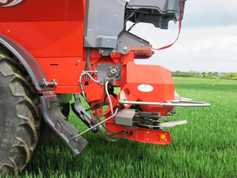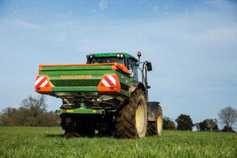All of the rams have been removed from the various groups of ewes here by now. All too often, the rams are forgotten about on farms at this stage as we believe their job is done.
Anyone involved in sport will tell you that preparation for the following season begins once the current season finishes, with players getting a rest and any ailments being remedied.
It is no different with the rams, as many will have lost condition, suffered a knock or just need some TLC.
To this end, all the rams are being fed some ration in order to build up any condition they have lost, as well as getting a once-over in the yard to check for any injuries they may be carrying.
I will also take note of any that may need to be replaced before next year’s breeding season, much like a soccer manager transferring players out of his squad to bring in the talent needed for the team’s future development.
Cold snap
The cold snap of late has resulted in the grass supplies disappearing a bit quicker than anticipated. That said, I still have enough to keep the mature ewes out for another few weeks. The ewe lambs, however, have just finished their allocation of grass fields.
They are going on to the Redstart forage rape this week. I will introduce them to it gradually by giving them access to a layback with a supply of silage so as to avoid any digestive upsets.
The change in diet can come as a shock to some lambs and can prevent them from putting on condition. It is important to monitor stock carefully during this changeover phase.
They have also had a mineral bolus to supplement any mineral deficiencies from the crop.
I have almost 24 acres of it for this winter and, all going well, I will be able to avoid housing them until just before lambing.
The weather has also presented an ideal opportunity to get some lime spread on fields that required it. I had a few fields from last year that I did not get to apply lime on due to the wet weather, along with a few that were shown to have a requirement from soil samples taken lately.
Reaction
Getting it spread at this time of year is ideal if you’re planning on using urea fertiliser in the spring. It needs to be applied at least eight weeks before hand with a sufficient amount of rainfall to wash the lime into the soil. Otherwise, a reaction occurs between the urea and the freshly applied lime particles, which results in much of the urea being lost to the atmosphere as a gas.
It can also take about six months for the lime to balance the pH in the soil allowing plants to take full advantage of their potential in the growing season.
Getting these timings right along with having favourable weather conditions sets up these fields well for the new year.






 This is a subscriber-only article
This is a subscriber-only article










SHARING OPTIONS: